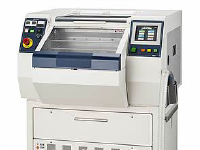
As of mid-2020, 42% of the U.S. labor force worked from home full time. This percentage is predicted to increase by end of the year. The increase stems from the pandemic that continues to impact lifestyle changes across the globe.
From the economy to communication, it seems like every aspect of living has undergone a massive change. One industry in particular that has grown a lot is tech-based products.
As we continue to track emerging trends in technology we see that they are changing along with the user. With that said, below is a breakdown of seven emerging and developing technology trends for 2021.
1. Blockchain
One of the most commonly discussed current technology trends is blockchain. In general, this service offers advanced security for currencies such as Bitcoin.
As a whole, blockchain technologies are data that you can only add to. This means that you cannot change or take away from any data blocks. As a result, this is one reason why blockchain technology is so secure.
Another reason for its high praise is its consensus-driven methods. This means that no single person can take control of the data.
Also, blockchain technology is designed so that you don’t need a third party to validate your transactions. As a result, you have a safer and more secure method of buying, trading, and storing cryptocurrency.
With that said, blockchain continues to grow into 2021. As more and more companies begin to adopt their services, the more in-demand professionals in this field are. Notable examples of blockchain users include Walmart and IBM.
2. Edge Computing
In the past, cloud-based services have dominated the market. Amazon Web Services and Google Cloud Platform are just a few that come to mind. As the future of technology progresses, cloud services are becoming less popular.
Many tech review sites such as TrustGeeky.com have taken note of their shortcomings. As a result, they have shifted their focus to new technology trends like edge computing.
Edge computing was designed to solve the pressing issues of cloud computing. To simply put it, edge works by bypassing latency issues when gathering data to process.
Due to its efficiency, many people are using edge computing to process time-sensitive information in difficult conditions. These include remote areas that struggle with connectivity.
It’s predicted that as the number of Internet of Things (IoT) devices grow as will edge computing. As a result, edge computing is expected to create tons of new jobs for those interested in software engineering.
3. Telemedicine
As with many other industries, the medical field was already shifting to technology-based operations before COVID-19. The urgency of the pandemic, however, has only kickstarted these applications.
For example, due to stay-in-place orders, many general practitioners have shifted to videoconferencing when treating patients. Also, the use of non-contact medication delivery and artificial intelligence (AI) diagnosis testing has spiked.
In North America, many companies are jumping on this opportunity to advance virtual healthcare. Companies like Apizee Health (USA) and Maple (Canada) have already established virtual doctor’s offices.
Also, many startups are currently working on driving the trend of virtual medicine. Some new companies include Eden Health and MeMD.
Telemedicine and telehealth services are also seeing advancements in AI and machine learning. These tech products have the potential to help advance diagnostic testing, robotic health care, and even administrative duties.
4. E-Learning
Other technology trends in 2021 include the advancement of e-learning. As the pandemic continues to rage across the world, teachers and students have taken to virtual learning as their primary resource.
Everyday classes, instructional videos, and group projects are now conducted through videoconferencing. Many institutions have already noted the success of this format and plan on continuing e-learning through 2021.
Alternatively, some institutions have begun implementing full-time, online-only programs. E-learning has become an asset for classrooms across the world, making it a prominent tech trend to watch in the future.
5. Virtual and Augmented Reality
Virtual reality (VR) and augmented reality (AR) have already established themselves as individual entities in the tech community. With that said, they have recently started to become more integrated with each other.
The reason? When combined, VR and AR make communication for users more fluid than ever. The advancements that led to their collaboration stemmed partly from the pandemic and partly from the desire of users.
Areas that are predicted to see major advancements in 2021 include facial recognition, VR sports, and mobility AR. These continue to grow along with the surge in 5G network applications.
It’s hypothesized that VR and AR applications may branch off into extended reality (ER). This expansion would further enhance user’s experiences in everyday living in places like shopping malls and theme parks.
6. 5G Applications
The introduction of a 5G network has excited the tech industry for a while now. The use of a 5G network will not only enhance the IoT but allow users to connect with their devices faster and more smoothly.
Previous 3G and 4G networks were decent at the time for browsing the internet and streaming. With 5G, you are now able to take these applications to a whole new level.
The use of a 5G network helps expand bandwidth for users to help create a more seamless use of their devices. 5G will also be extremely helpful when enhancing retail experiences and management within the workplace.
Experts have noted that 5G will be offered in over 30 countries by the end of 2021. Users in these countries will see a major development in the processes of traffic flow as well as power usage among their devices.
7. Robotic Process Automation
Robotic process automation (RPA) is the process of automating jobs using business software. Primarily, RPA is used to help complete business-related tasks more efficiently.
Processes such as transactions, email formulation, and interpretation of apps are all currently being used with RPA technology. In the future, RPA has been noted as a great alternative for jobs that require the completion of repetitive tasks.
With this introduction, many have feared that RPA will eliminate jobs. However, it will create some as well. The development of this software is in demand as the interest in RPA continues to grow.
Knowing this, it is clear that the demand for RPA software programmers will increase. In 2021 and beyond, RPA is expected to become more prominent in business strategy for companies across the world.
Keeping Up With Technology Trends
As the needs of users continue to grow, as will the advancements in technology. As we’ve seen, technology has applications in every industry and has no limits to what it can achieve.
For more information about technology trends, feel free to explore our site. Our technology section helps you stay up-to-date on current and future technology trends.


















